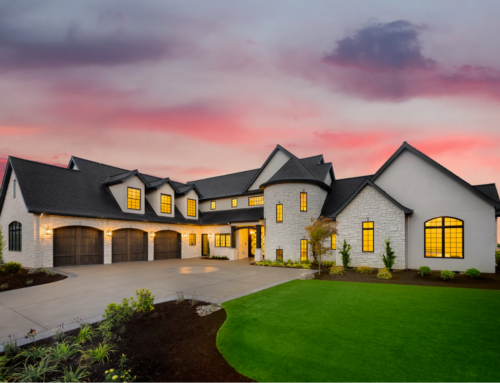
But a significant portion of the workforce toils away all night, during evening shifts, or on weekends. While not always highly visible and easily noticeable to the rest of us that are snoozing all night, they’re the people that bake our bread, answer our around-the-clock calls, deliver babies in the wee hours, and keep our streets safe at night. They often make huge sacrifices to keep our society running ‘round the clock, including an impact to their relationships, social life, health…and definitely sleep.
In order to pay tribute to all of those workers on the night shift, here are 25 facts about employees who work graveyards or other non-traditional shifts.
An estimated three million Americans now work the graveyard shift – also called the third shift – between 11 p.m. and 7 a.m. An additional four million employees go to work during the evening shift, and eve more work floating or erratic schedules that include night work.
These days, one in five employees in the U.S. works nonstandard hours, like evening, night, or rotating shifts.
Additionally, one in three of us works on the weekend.
Add it all up and approximately two in every five workers in the U.S work during nonstandard times — defined as evenings, nights, rotating shifts, or weekends.
Traditionally blue-collar, more white-collar jobs go all night:
Long attributed to bakers, policemen, ambulance drivers and factory workers, night shifts are increasingly being worked by white collar employees, like energy brokers, world market stock traders, computer programmers and financial advisors.
In fact, with the dawn of the age of digitalization and connected world commerce, there was a huge 11% spike in the number of white-collar employees working evenings or nights, between 1991 and 1997, dwarfing the 6% increase among blue collar workers in that same period.
These days, of the estimated 27 million employees who are in managerial and professional work, about 1.3% work the night shift and 1.7% work evening shifts.
Even more prevalent are night shifts among technical, sales, and administrative support workers, with 2.1% of these 25 million employees working night shifts and 3.5% working evening shifts.
But the rate of night work is still highest among blue-collar workers, particularly service workers (including those in security, food services and cleaning services), with 6.5% of the 11 million service employees working night shifts and 10.8% working evening shifts.
Additionally, of the approximately 14 million operators, fabricators, and laborers in the U.S. workforce, 7.4% work the night shift and 7.7% work evening shifts.
In fact, jobs that include time shifts outside of traditional daytime work hours include some of the occupations where the most growth is expected over the next decade.
Why do people work the night shift?
A survey of part-time night shift workers revealed that the main reasons they worked non-traditional hours included:
42% ‘allows time for school’
22.5% ‘nature of the job’
9% ‘better arrangements for family or childcare’
6.1% ‘could not get any other job’
9.7% of mothers and 2.9% of fathers also cite personal and family reasons for working night or evening shifts, including “care of family members,” “better pay,” “time for school,” and “easier commute,” and others.
An additional 11.5% of night-workers surveyed say that it’s just their preference,
8.2% ‘better arrangements for family or child care’
8.1% ‘could not get any other job’
and 6.8% said they received ‘better pay’
Careers where alternative hours are standard:
The instance of night and evening shift work is most common in service occupations, leading with protective services, or security workers, which includes police, firefighters, and private security guards. 50.6% of workers in this industry have worked some sort of schedule including non-traditional hours.
Employees in the field of food preparation and serving are next, with 40.4% working night or evening shifts.
Workers in the fields of production, transportation, and material moving also work night shifts at a 26.2% clip.
The fields with the highest rates of alternative shift work, including evening and rotating schedules, includes:
38.3% Leisure and hospitality industries
33% Arts, entertainment, and recreation
31.9% Mining
27.9% Transportation and utilities
The health toll of working the night shift:
Aside from sacrifices to relationships, time with family and social lives, there’s a huge health impact to working night shifts.
In fact, long-term night shift workers experience:
Chronic disruption of their circadian rhythm, the internal clock that sets sleep and waking schedules. In fact, no matter how long they’ve worked the night shift, people never fully adjust.
An estimated 45 minutes less sleep every day/night than day workers, and their sleep is lighter and less restful, not giving their brain and body sufficient time to recover and recharge.
Scientists estimate that waking up at 4 a.m. have the same mental prowess as someone who just drank a few shots of whiskey.
A study of the brains of workers who’ve worked on the night shift for at least ten years found that they’d mentally aged an extra six and a half years more than normal, essentially growing 16 years older in terms of mental capacity every decade.
Studies have shown that night shifts are linked to higher rates of cancer, with women who work night shifts for 30 years or more twice as likely to develop breast cancer.
Chronic sleep loss contributes to high blood pressure, heart disease, and strokes.
Night shift workers are more likely to have poor diets due to excessive caffeine and sugar consumption, leading to type 2 diabetes and heart disease.
Studies show that working non-standard and night shifts can also lead to irritability, mood swings and higher rates of depression.
***





